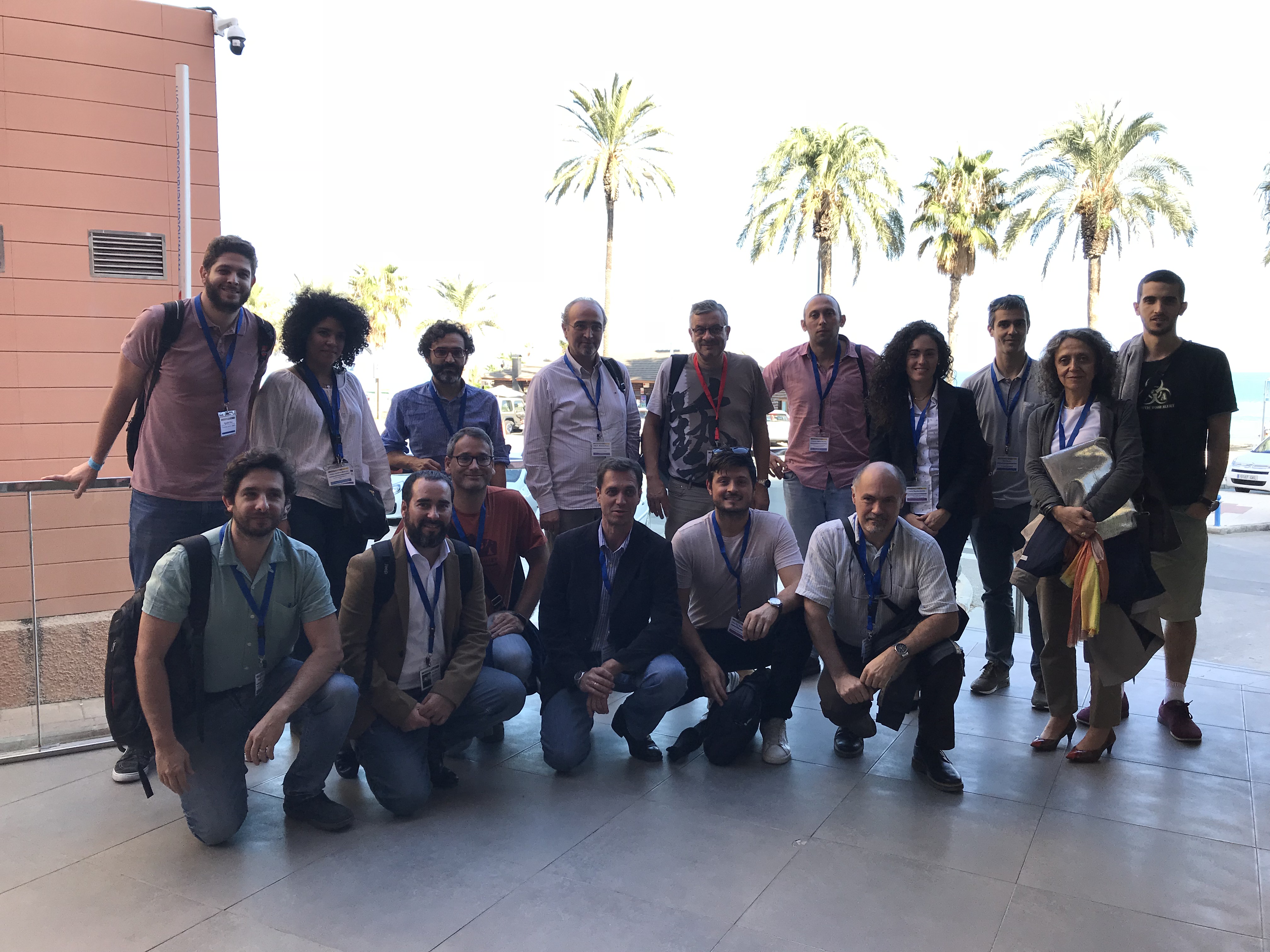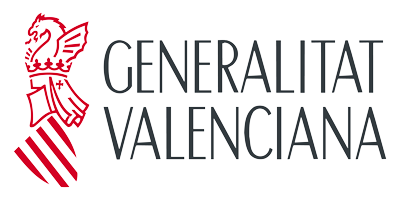Red de Excelencia
Aims and Objectives
The hybrid perovskite solar cells constitute a very promising field of research to develop a new photovoltaic technology aimed at one of the main current social challenges of obtaining cheap, safe and carbon-free energy. The rise of the photovoltaic hybrid perovskites has promoted a highly varied and multidisciplinary field of research where innovative fundamental studies and innovative applications emerge in related fields, such as nanostructures and semiconductors for illumination. The PEROVSKITAS Network brings together 10 leading centers of fundamental, applied and technological research to establish a strong research community on hybrid perovskite semiconductors focused on the social challenges of alternative ways of producing energy but with many ramifications that extend through the fields of physics, chemistry, and the science of materials, with very basic aspects of science and oriented to technological productions. The activities of the network will focus on holding open scientific meetings with intensive participation of young researchers, in order to bring together the scientific community in this area. Other objectives are: To facilitate and promote the participation of national and international companies related to new photovoltaic and clean energy applications in general, coordinate the production of scientific cooperative research and publications resulting from contacts in the Network, to disseminate to the general public the contents and activities of the Network, to improve the internationalization of the groups, and to promote participation in European projects.
Participants
Activities
Online meeting on perovskites for light emission - Online
Organizador:
Iván Mora-Seró Universitat Jaume I, Castellón, Spain
Halide perovskite revolutionized the photovoltaic field one decade ago with high performances in solution processes devices based on the low non-radiative recombination. This property is also a key aspect for the development of other optoelectronic devices as LEDs and lasers, with emission easily tuned varying the halide perovskite composition. In this online meeting we will analyze the optical characterization and optical properties of halide perovskite solar cells and their application in light emitting devices. We will discuss problems of measurements, mechanistic behaviours, non-linear properties and device preparation and performance.
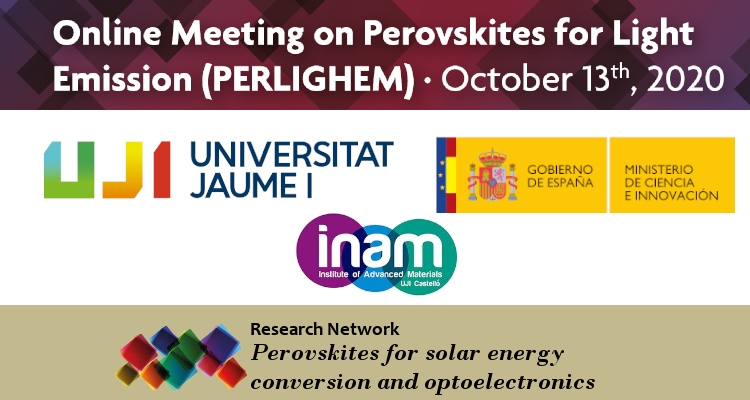
Measurement of Perovskite Solar Cell by Impedance Spectroscopy and Transient Methods - Online
Organizador:
Juan Bisquert Universitat Jaume I, Castellón, Spain
This online seminar brings the scientific conference gathering to the desktops or smartphones of scientists worldwide. Researchers can present their work and keep up with cutting-edge research in the field while reducing their carbon footprint, improve the work-life balance and keep the sense of community.
It will consist of two parts, in which interaction will be the main force:
The Oral Session will consist on a few short broadcasted talks led by Invited Speakers, followed by a time for questions from the public driven by a moderator.
ePoster Session, where participants will discuss their ideas in a chat platform
All participants can join and present here their work. Due to the short format of the meeting (with few oral contributions), we encourage senior researchers to present ePoster, and of course we expect enthusiastic participation of junior researchers.
Speakers: Juan A. Anta, Bruno Ehrler, Francisco Fabregat-Santiago, Dino Klotz, Iván Mora-Seró
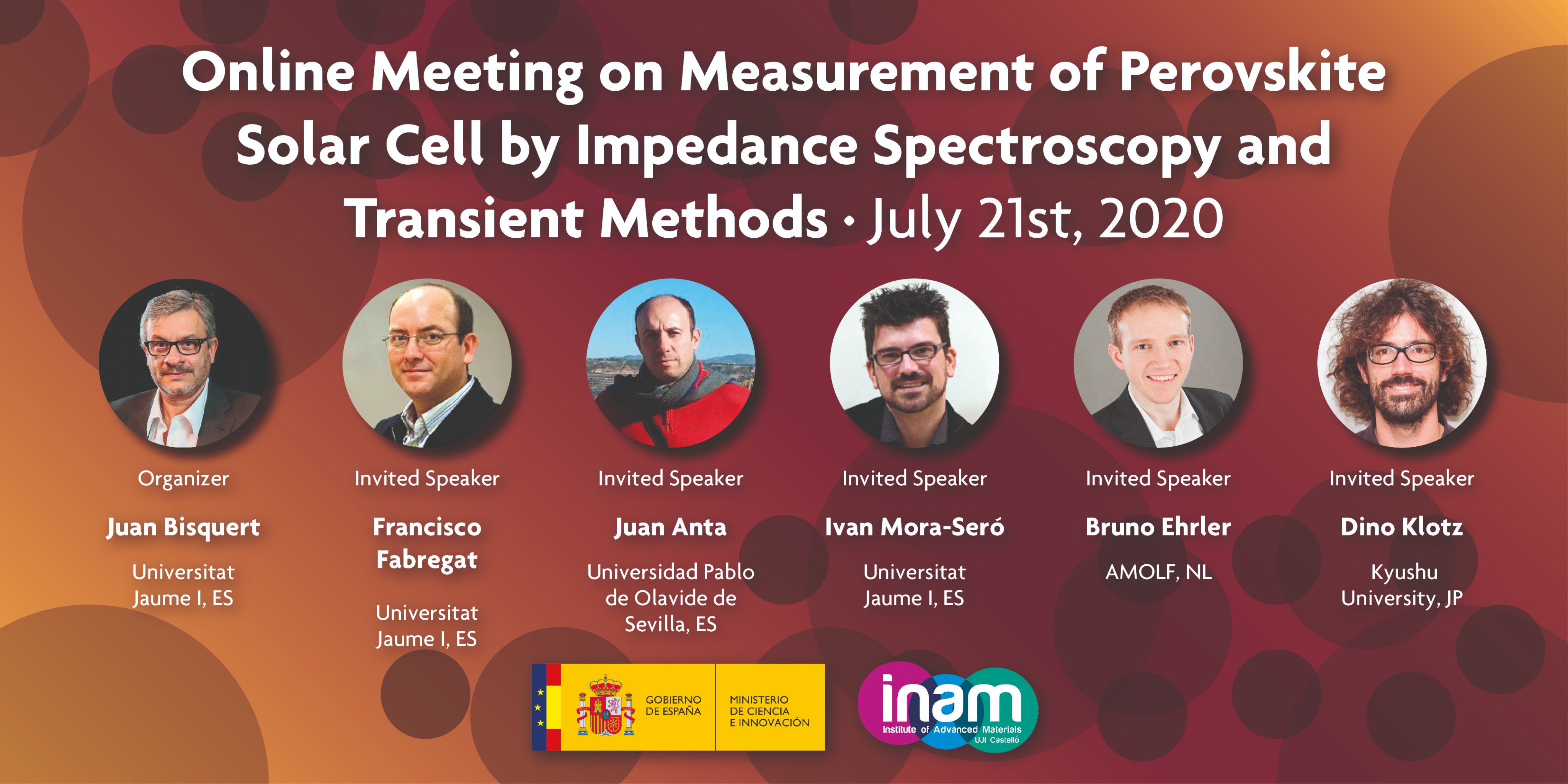
Research Network Perovskites for solar energy conversion and optoelectronics meeting - Sevilla, España, Miércoles, 26 de Febrero de 2020
Organizadores:
Mauricio Calvo Instituto Ciencia de Materiales CSIC, Sevilla, Spain
Juan Antonio Anta Universidad Pablo de Olavide de Sevilla, Spain
Las células solares de perovskita híbrida constituyen un campo de investigación muy prometedor para desarrollar una nueva tecnología fotovoltaica dirigida a uno de los principales retos sociales actuales, el de obtener energía barata, segura y libre de carbono. El auge de las perovskitas híbridas fotovoltaicas ha dado lugar a un campo de investigación muy variado y multidisciplinar donde surgen estudios innovadores fundamentales y de aplicaciones novedosas en otros ámbitos, como las nanoestructuras y los semiconductores para iluminación. Pero, a pesar de las grandes expectativas despertadas por estos materiales, aún siguen cuestiones abiertas que requieren de la puesta en común de la experiencia de distintos grupos de investigación. Esta es la cuarta edición Red PEROVSKITAS, que reúne 10 centros punteros de investigación fundamental, aplicada y tecnológica, para establecer una fuerte comunidad investigadora sobre semiconductores de perovskitas híbridas, enfocado a los retos sociales de maneras alternativas de producción de energía, pero con muchas ramificaciones que se extienden por los campos de la física, la química, y la ciencia de los materiales, con aspectos de ciencia básica y orientado a las producciones tecnológicas. Reunión científica desarrollada dentro de la Red PEROVSKITAS
Speakers: Alicia de Andrés, Lidia Contreras-Bernal, Agustin Alvarez, Marisé García-Batlle, Laura Caliò, David Macias, Alejandro R. Goñi, Andrés F. Gualdrón-Reyes, Andrea Rubino, Juan Navarro-Arenas, Hamid Pashaeiadl, Carlos Romero Pérez

Research Network Perovskites for solar energy conversion and optoelectronics meeting - Madrid, España, Viernes, 27 de septiembre de 2019 - 9:45 a 16:30
Organizadores:
Mª del Carmen Coya Párraga (Universidad Rey Juan Carlos - ETSIT, España)
Isaac Suárez (Universidad Rey Juan Carlos - ETSIT, España)
Antonio Guerrero (Universitat Jaume I - INAM, España)
Las células solares de perovskita híbrida constituyen un campo de investigación muy prometedor para desarrollar una nueva tecnología fotovoltaica dirigida a uno de los principales retos sociales actuales, el de obtener energía barata, segura y libre de carbono. El auge de las perovskitas híbridas fotovoltaicas ha dado lugar a un campo de investigación muy variado y multidisciplinar donde surgen estudios innovadores fundamentales y de aplicaciones novedosas en otros ámbitos, como las nanoestructuras y los semiconductores para iluminación. Pero, a pesar de las grandes expectativas despertadas por estos materiales, aún siguen cuestiones abiertas que requieren de la puesta en común de la experiencia de distintos grupos de investigación. Esta es la tercera edición Red PEROVSKITAS, que reúne 10 centros punteros de investigación fundamental, aplicada y tecnológica, para establecer una fuerte comunidad investigadora sobre semiconductores de perovskitas híbridas, enfocado a los retos sociales de maneras alternativas de producción de energía, pero con muchas ramificaciones que se extienden por los campos de la física, la química, y la ciencia de los materiales, con aspectos de ciencia básica y orientado a las producciones tecnológicas. Reunión científica desarrollada dentro de la Red PEROVSKITAS
Speakers:
Hernán Míguez (Multifunctional Optical Materials Group, CSIC, Sevilla), Emilio Palomares (Institut Català d’Investigació Química, ICIQ, Tarragona), Esteban Climent (Escuela Técnica Superior de Ingeniería Industrial, Universidad Politécnica de Madrid, Madrid), Antonio Guerrero (Institute of Advanced Materials (INAM), Castellón), Isaac Suárez (Escuela Técnica Superior de Ingeniería de Telecomunicación (ETSIT), Universidad Rey Juan Carlos, Móstoles), Juan Luis Delgado (POLYMAT, San Sebastián), Teresa Ripollés (Escuela Técnica Superior de Ingeniería de Telecomunicación (ETSIT), Universidad Rey Juan Carlos, Móstoles).
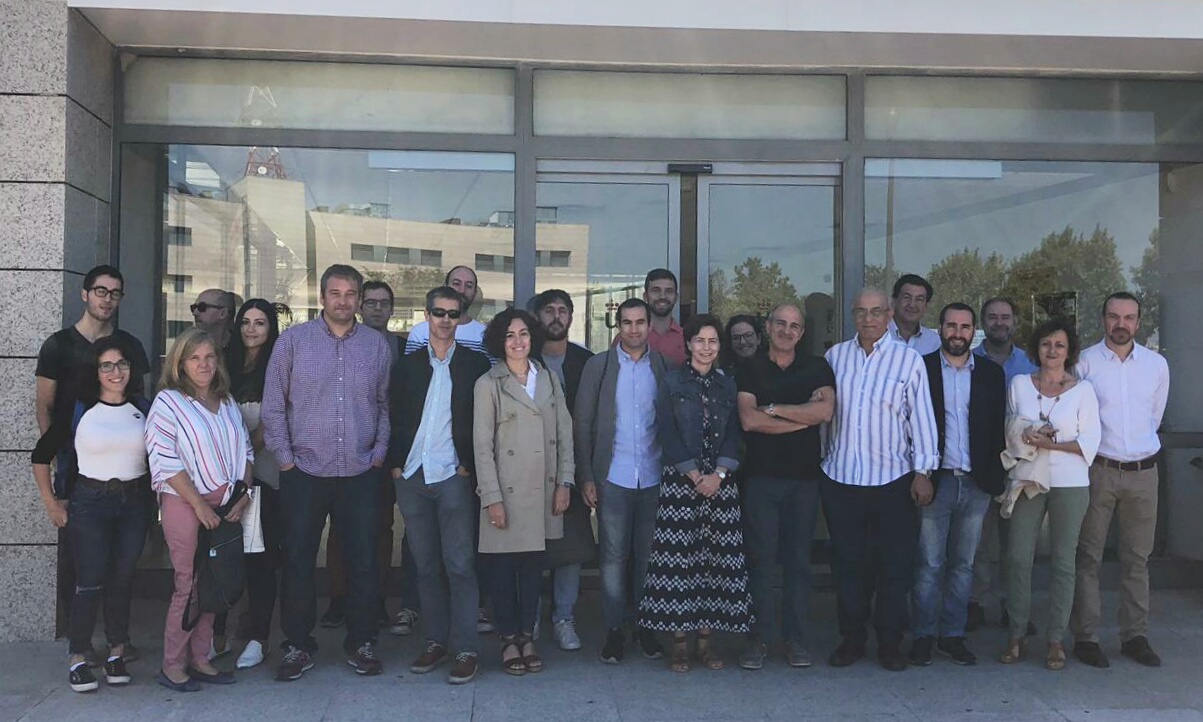
Research Network Perovskites for solar energy conversion and optoelectronics (PEROVSKITAS) - Castelló, Spain, Monday, May 6, 2019 - 10:00 to Tuesday, May 7, 2019 - 16:00
Organizers:
Juan Bisquert (INAM, Universitat Jaume I, Spain)
Juan Martínez Pastor (Universitat de València, Spain)
The hybrid perovskite solar cells constitute a very promising field of research to develop a new photovoltaic technology aimed at one of the main current social challenges of obtaining cheap, safe and carbon-free energy. The rise of the photovoltaic hybrid perovskites has promoted a highly varied and multidisciplinary field of research where innovative fundamental studies and innovative applications emerge in related fields, such as nanostructures and semiconductors for illumination. This was the second of the meetings organized by the PEROVSKITAS network, which brings together 10 leading centers of fundamental, applied and technological research to establish a strong research community on hybrid perovskite semiconductors focused on the social challenges of alternative ways of producing energy but with many ramifications that extend through the fields of physics, chemistry, and the science of materials, with very basic aspects of science and oriented to technological productions.
Biography:
Institut de Materials Avançats, Universitat Jaume I, Castelló INAM-UJI Juan Bisquert Universidad Pablo de Olavide, Sevilla UPO Juan A. Anta Universitat de Valencia UV Juan P. Martinez Pastor Institut de Ciència de Materials de Barcelona, CSIC ICMAB Alejandro Goni Universidad Rey Juan Carlos, Madrid URJC Carmen Coya Párraga Universidad Autonoma de Madrid UAM Maximo Leon Fundación CENER-CIEMAT CENER Ana Rosa Lagunas Universidad Cadiz UCA Javier Navas Universidad de Castilla La Mancha UCLM Abderrazzak Douhal Instituto Ciencia de Materiales CSIC Sevilla ICMSE Mauricio Calvo
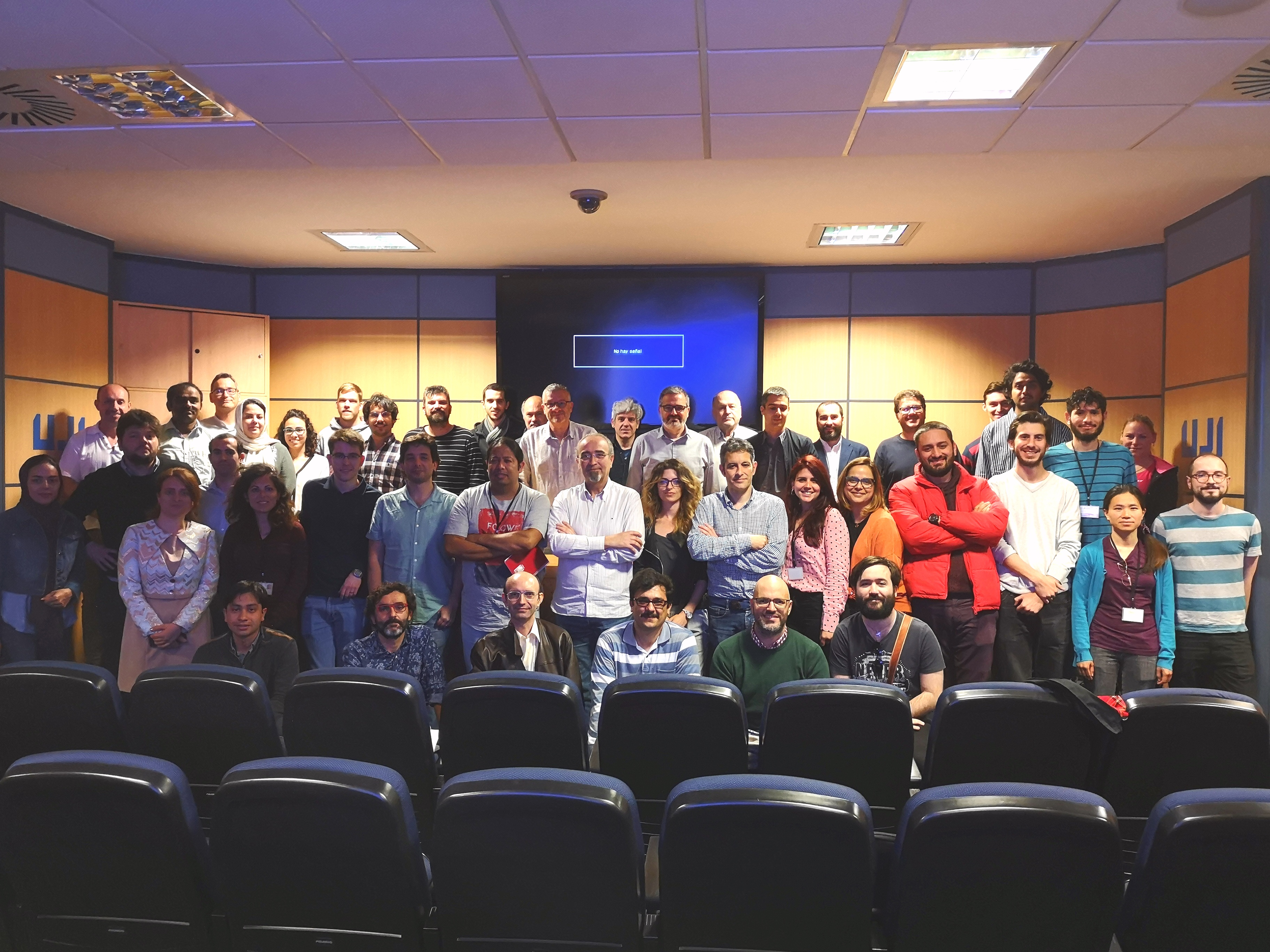
Research Network Perovskites for solar energy conversion and optoelectronics (PEROVSKITAS) - Torremolinos, Málaga, 24 October 2018
Organizer: Juan Bisquert (INAM, Universitat Jaume I, Spain)
The hybrid perovskite solar cells constitute a very promising field of research to develop a new photovoltaic technology aimed at one of the main current social challenges of obtaining cheap, safe and carbon-free energy. The rise of the photovoltaic hybrid perovskites has promoted a highly varied and multidisciplinary field of research where innovative fundamental studies and innovative applications emerge in related fields, such as nanostructures and semiconductors for illumination. This was the first of the meetings organized by the PEROVSKITAS network, which brings together 10 leading centers of fundamental, applied and technological research to establish a strong research community on hybrid perovskite semiconductors focused on the social challenges of alternative ways of producing energy but with many ramifications that extend through the fields of physics, chemistry, and the science of materials, with very basic aspects of science and oriented to technological productions.
Invited speakers: Mauricio Calvo (Instituto de Ciencia de los Materiales de Sevilla (CSIC)), Alejandro Goñi (Institut de Ciència de Materials de Barcelona (CSIC)), Antonio Guerrero (Universitat Jaume I), Jesús Idígoras (Universidad Pablo de Olavide), Ana Rosa Lagunas (Fundación CENER-CIEMAT), Juan P. Martinez Pastor (Universitat de València), Javier Navas (Universidad de Cádiz), Teresa Ripollés (Universidad Rey Juan Carlos)
